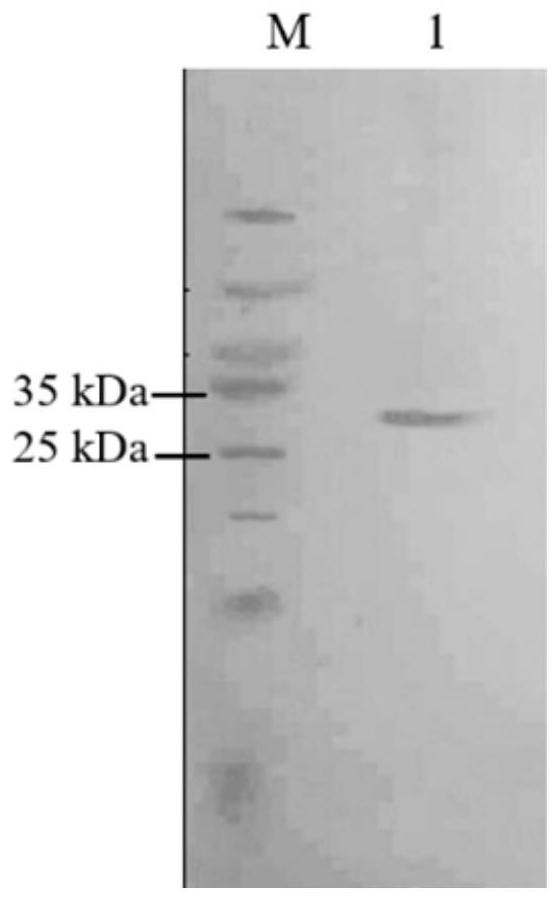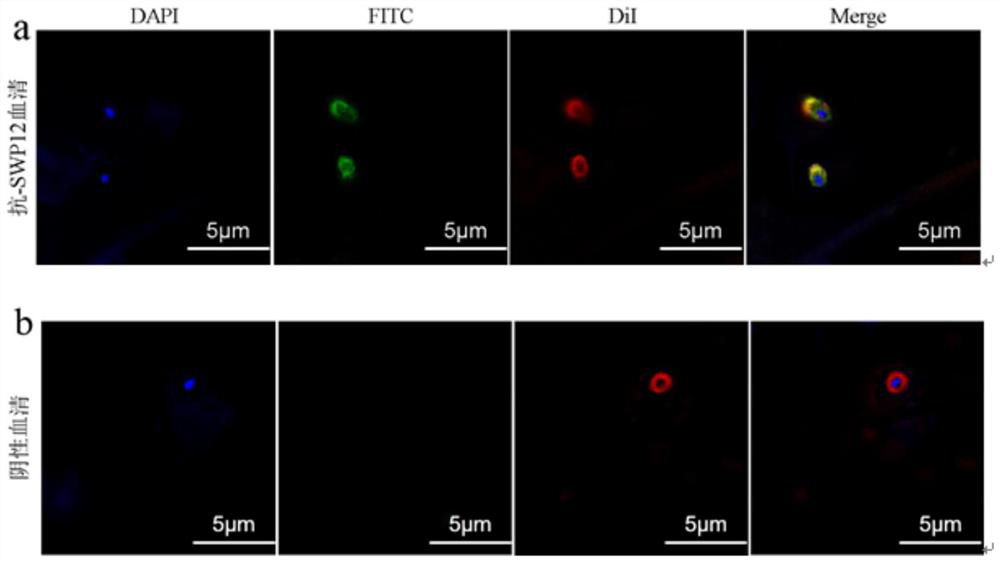Application of spore wall protein in prevention and control of enterocytozoon hepatopenaei infection by mixing and feeding shrimps
A technology of sporospora protein and hepatic enterocystosis, which is applied in the field of aquaculture disease prevention and control, can solve the problems of excessive feed consumption, difficulty in the prevention and control of transmission routes, and prolong the time of feeding and marketing, so as to achieve operability and prevent shrimp Effects of Hepatic Enteroplasma Infection
- Summary
- Abstract
- Description
- Claims
- Application Information
AI Technical Summary
Problems solved by technology
Method used
Image
Examples
Embodiment 1
[0041] 1. Construction of prokaryotic expression plasmid of spore wall protein SWP12
[0042]According to the published spore wall protein SWP12 gene (NCBI accession number is MN604021.1) of E. hepatis, it is codon-optimized, and the codon-optimized nucleotide sequence is shown in SEQ ID No. 2, and the It is constructed on plasmid pET-28a(+) (conventional commercial product) to obtain recombinant expression plasmid pET28a-SWP12; wherein, gene SWP12 is inserted between BamH I and Xho I restriction sites of plasmid pET-28a(+) . The recombinant expression plasmid pET28a-SWP12 was transferred into the engineering bacteria Escherichia coli Rosetta (conventional commercial product), and after sequencing and verification, the engineering bacteria were cultured in large quantities, and the strains were stored at -80 °C, and recorded as recombinant engineering bacteria Rosetta / pET28a- SWP12.
[0043] 2. Prokaryotic expression and purification of spore wall protein SWP12
[0044] 2.1...
PUM
 Login to View More
Login to View More Abstract
Description
Claims
Application Information
 Login to View More
Login to View More - Generate Ideas
- Intellectual Property
- Life Sciences
- Materials
- Tech Scout
- Unparalleled Data Quality
- Higher Quality Content
- 60% Fewer Hallucinations
Browse by: Latest US Patents, China's latest patents, Technical Efficacy Thesaurus, Application Domain, Technology Topic, Popular Technical Reports.
© 2025 PatSnap. All rights reserved.Legal|Privacy policy|Modern Slavery Act Transparency Statement|Sitemap|About US| Contact US: help@patsnap.com



